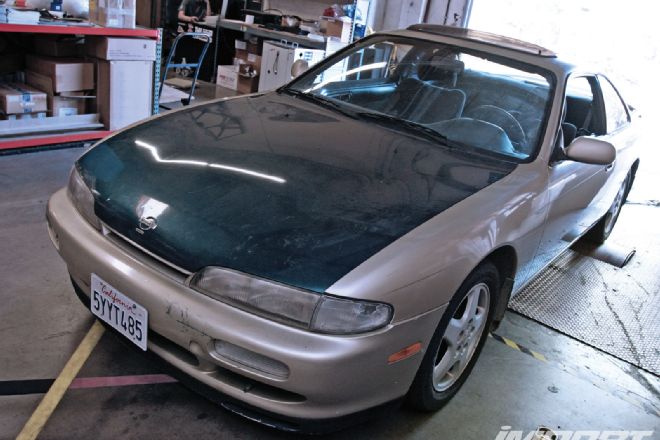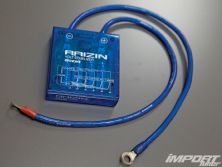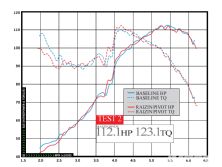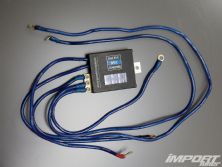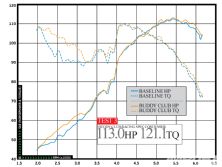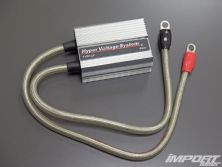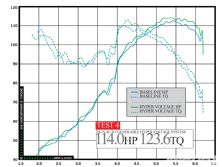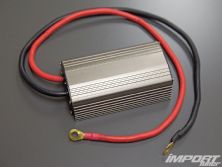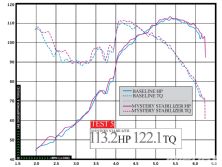Testing By Scott Tsuneishi
Dear Import Tuner,
I'm writing to suggest a product for you to test in Fact or Fiction: voltage stabilizers. It seems like every JDM company makes one, but they never really explain how they work, just that installing them will make your car better in every way. But everyone online talks shit on them. Do they work? How do they work? Are they worth their price?
Thanks,
-Jeremy Panza,
via factorfiction@importtuner.com
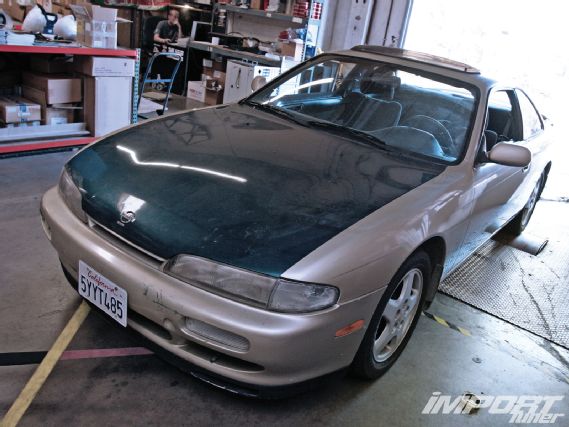 |
Voltage Stabilizers Can Increase Power And Torque - Fact Or Fiction
|
Voltage Stabilizers Can Increase Power And Torque - Fact Or Fiction
If ever there was a mysterious area of vehicle functionality, it's a car's electrical system. Engine dynamics, suspension setup, brake sizing-even tuning-are easy to understand because we can feel, observe, and visualize what's going on. More displacement equals the combustion of more air and fuel for more power. Less body roll and a lower center of gravity bring better handling. Larger brakes mean more surface area to distribute heat and less brake fade. Pre-ignition alongside elevated exhaust gas temperatures? Add more fuel. Simple.
But such is not the case in the world of electronics, where everything happens at the speed of light, by subatomic particles that announce their presence only when shorting things out, or catching stuff on fire. Following suit are shady products promising to do great things for a car's electrical system. After all, if you can't tell how well something is working, you can't say for sure whether Company X's product doesn't actually make it better. But that's why we're here.
The Claim:
Voltage stabilizers can increase power and torque.
This month, we put four of the market's most popular voltage stabilizers to the test. Not to be confused with grounding systems that supplement a car's OE battery and chassis grounds, voltage stabilizers-sometimes called "condensers"-attach directly to a car's battery at the positive and negative terminals, and purport to regulate the flow of electricity running from a car's battery to its electrical components, smoothing idle, improving output from headlights and audio equipment, increasing battery life, and improving combustion efficiency for increased power/torque and decreased emissions.
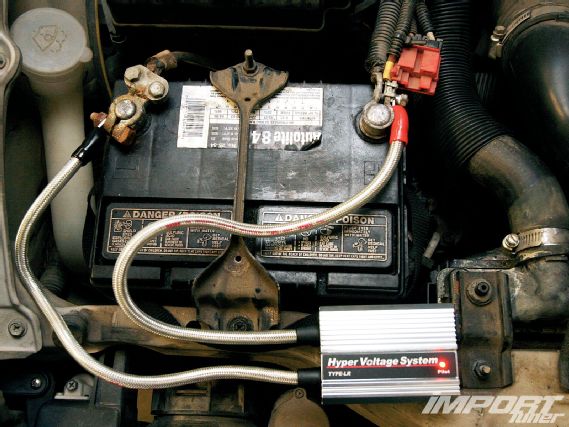 |
Voltage Stabilizers Can Increase Power And Torque - Fact Or Fiction
|
Voltage Stabilizers Can Increase Power And Torque - Fact Or Fiction
The first thing to remember is that a car's battery acts like a big voltage stabilizer already. Electricity generated from the alternator is sent to the battery and electrical devices as needed. During periods of low electrical draw (headlights, audio, A/C off, for example), excess electricity generated by the alternator charges the battery rather than passing through the system. But when the demand of a car's electrical system outweighs what the alternator can generate (during low idle, and/or high electrical draw, for example), electricity is discharged from the battery in the amounts needed to pick up the slack. The problem is that a traditional lead-acid battery can't switch from charge to discharge rapidly enough to quell small-scale voltage fluctuations or electrical "noise" that can adversely affect a car's electrical components. The more advanced (expensive) batteries and electrical systems of newer cars can do a near-perfect job of stabilizing rouge current, but in any event-say the makers of voltage stabilizer kits-there's a lot to be gained by adding an aftermarket system of capacitors to the mix.
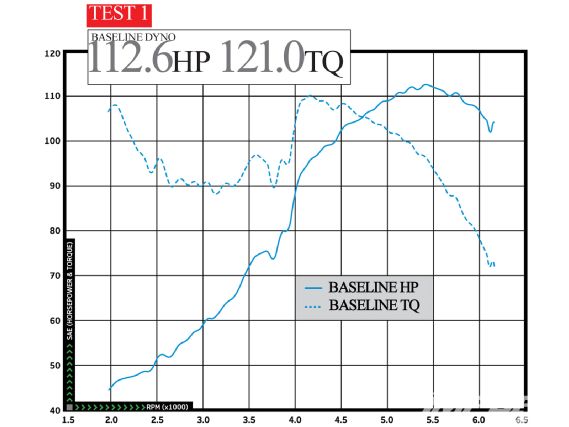 |
Voltage Stabilizers Can Increase Power And Torque - Fact Or Fiction
|
Voltage Stabilizers Can Increase Power And Torque - Fact Or Fiction
Our testing commenced with us strapping Elliott "Mr. Super Lap" Moran's new (for him) KA24DE-powered '95 240SX to the rollers of City of Industry, CA-based SP Engineering's Dynojet dyno, and performing several Third-gear full-throttle pulls, first as a baseline with no voltage system installed, then again with each of the four contenders in place.
First up was the Raizin Pivot, whose Japanese-based manufacturer boasts the confidence to construct the product with transparent casing. Its design is simple: four capacitors to charge and discharge rogue electrical current faster than a car battery, some small-gauge positive and negative wiring, two replaceable fuses, and an LED to signify correct installation.
Next up was Buddy Club's Racing Spec Condenser. From what we could see through the window in its casing, it's constructed much like the Raizin, but with larger capacitors and the addition of supplemental grounding straps.
Our third and final Japanese contender was Sun Auto's venerable Hyper Voltage System, one of the first such kits on the market. It featured stainless covered copper wiring larger than any of the other systems, and a fully sealed module-great for keeping contaminants out, but not so great for serviceability or seeing how it works. Still, it returned the best peak numbers of the bunch.
Our "mystery stabilizer" (so named because it was donated for testing with no labeling of any sort), was the last to go under the microscope. Its aluminum heat-sink body is common to several brands, as is its Home Depot-esque black and red wiring. We won't speculate which brand we think it to be.
The Verdict:
Each stabi-lizer brought slight increases to power and torque throughout the rev-range, and with the exception of the Raizin that lost a fraction of a horse up top, each system bumped up peak power and torque. But the amount by which power and torque increased-0.5 whp and 1.5 lb-ft of torque, on average-is low enough to be considered standard variance in back-to-back testing a 15-year-old car with an impressive history of check-engine lights. Still, based on the all-around performance of the Sun Auto unit and the low-end performance of the Buddy Club piece, and the fact that Elliott swears the Sun Auto unit actually makes his scratched, yellow headlights brighter, we have to concede that these things might be of some benefit after all.
 |
Voltage Stabilizers Can Increase Power And Torque - Fact Or Fiction
|
Voltage Stabilizers Can Increase Power And Torque - Fact Or Fiction

